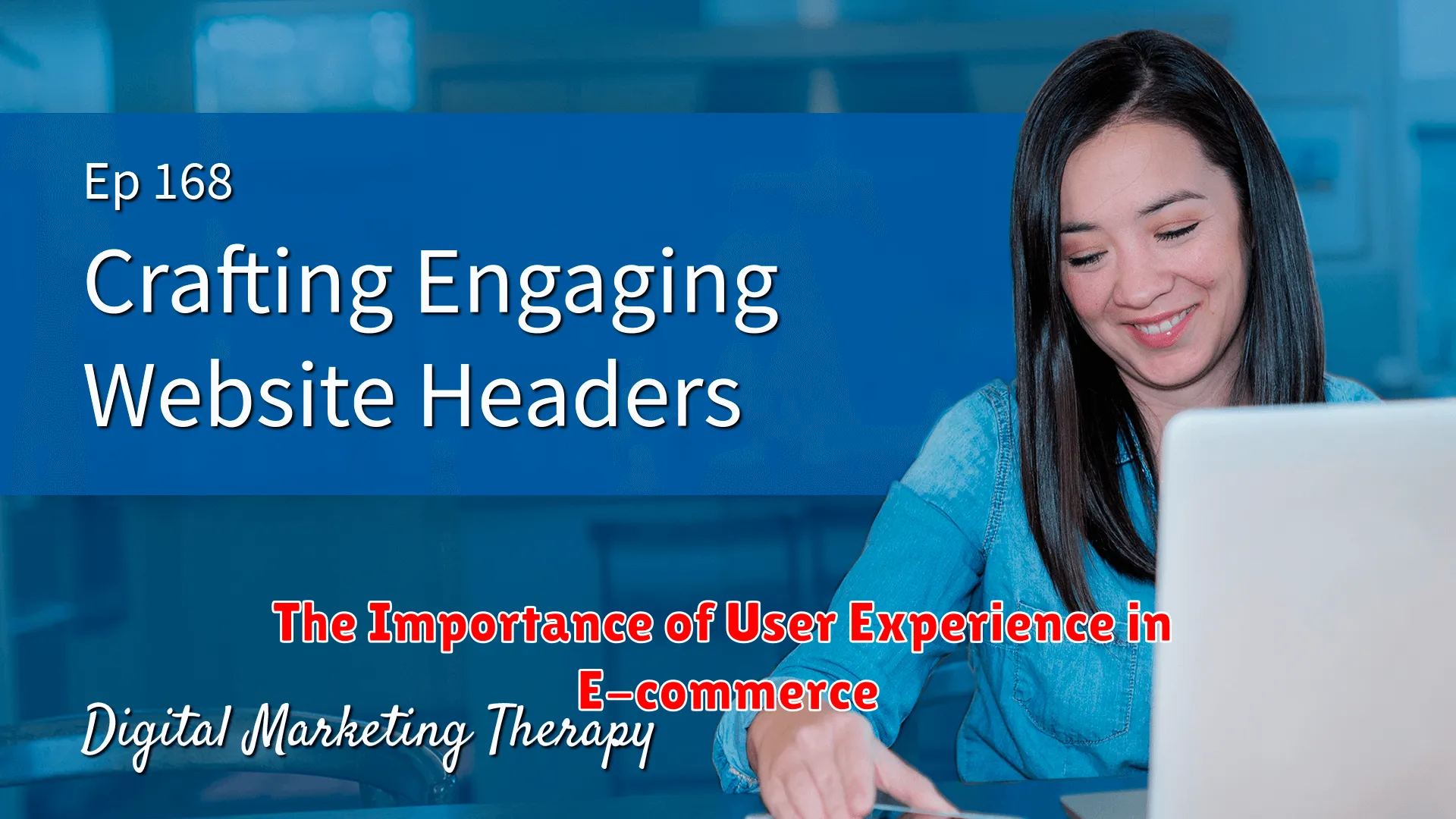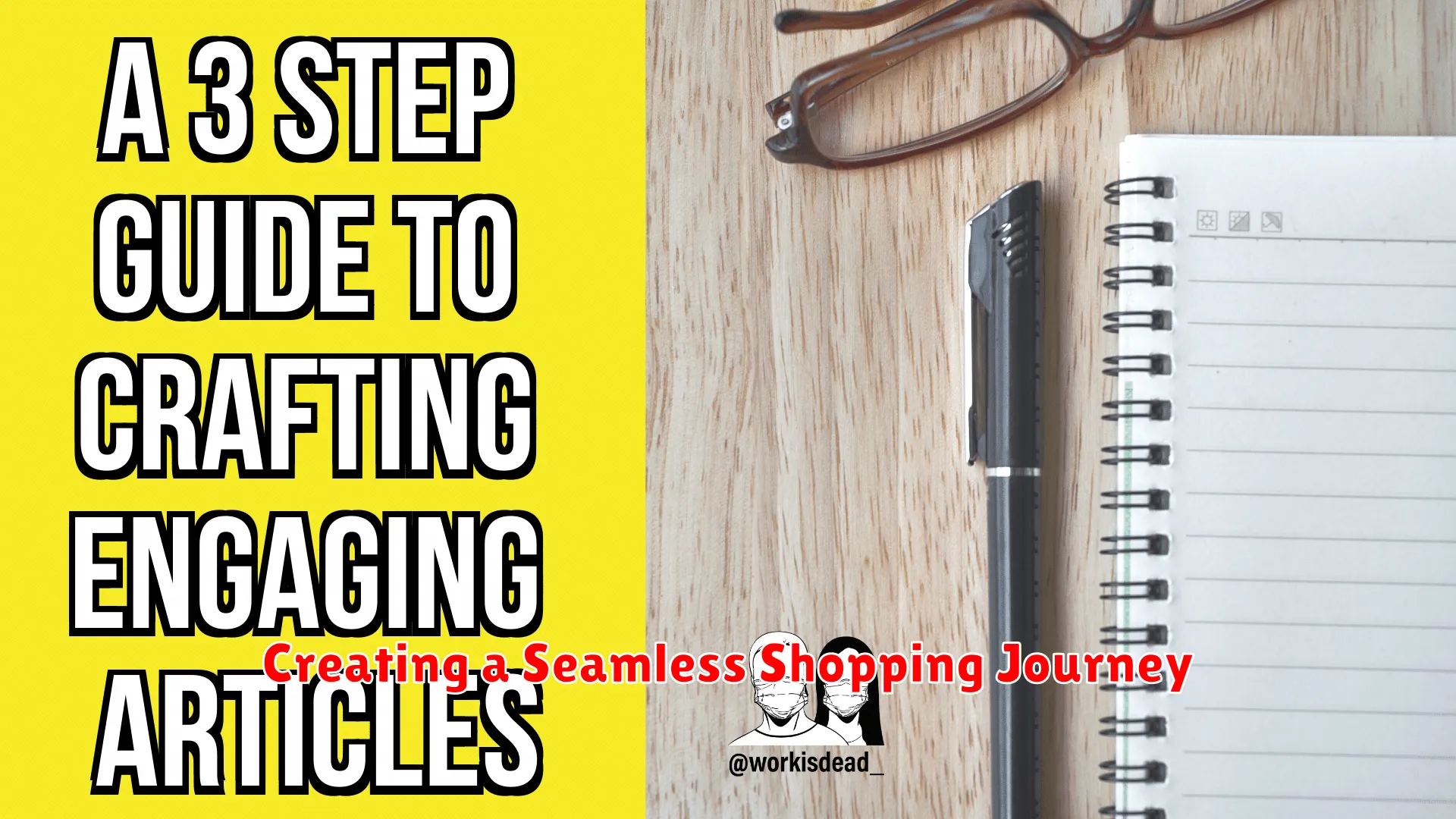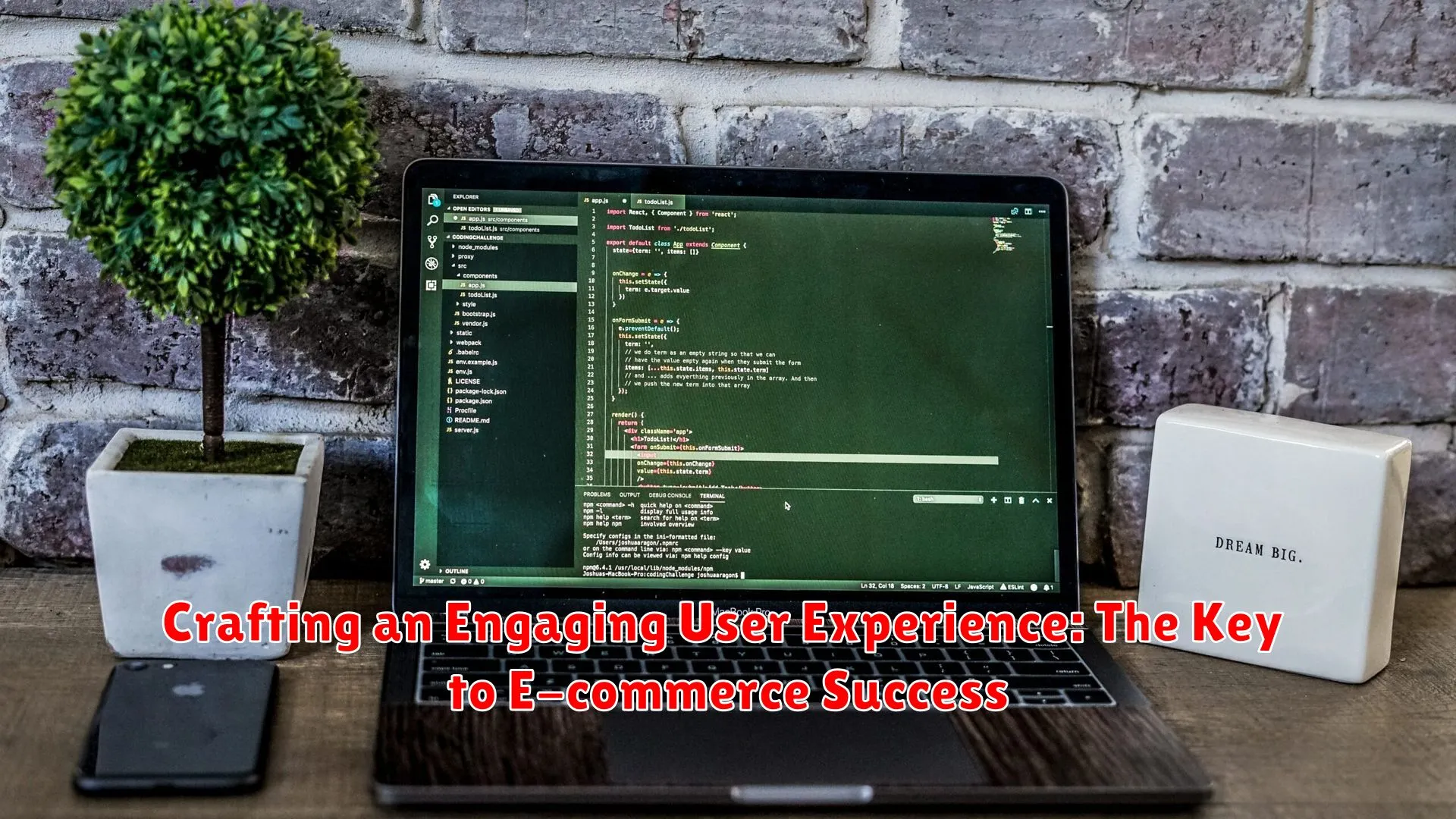Discover how crafting an engaging user experience is the crucial element for achieving success in the competitive world of e-commerce. Learn the key strategies and principles to create a seamless and captivating online shopping journey for customers.
The Importance of User Experience in E-commerce

When it comes to e-commerce success, one of the key factors that businesses cannot afford to overlook is the user experience. The overall experience that a customer has while navigating through an online store can make or break their decision to make a purchase. A seamless and engaging user experience is crucial in attracting and retaining customers in the competitive world of online retail.
A well-crafted user experience in e-commerce encompasses various aspects such as website design, navigation, page loading speed, mobile responsiveness, and checkout process. The primary goal is to create a user-friendly environment that simplifies the shopping journey for customers, ultimately leading to increased conversions and customer satisfaction.
User experience plays a significant role in building trust and credibility with consumers. A website that is visually appealing, easy to use, and provides relevant information fosters a positive perception of the brand and encourages repeat visits. By focusing on optimizing the user experience, e-commerce businesses can differentiate themselves from competitors and build a loyal customer base.
Designing for Usability and Accessibility

When crafting an engaging user experience in the realm of e-commerce, designing for usability and accessibility is crucial. Usability refers to how easy and efficient it is for users to navigate your website or app, while accessibility ensures that individuals with disabilities can also interact effectively with your platform.
Usability is about making the user journey smooth and intuitive. This involves having a clear and consistent layout, easy navigation menus, and prominent calls-to-action that guide users towards their goals. By prioritizing usability, businesses can reduce frustration and increase conversions as users can quickly find what they are looking for.
Accessibility, on the other hand, focuses on creating a platform that can be used by everyone, regardless of their abilities. This includes features such as screen reader compatibility, keyboard navigation options, and proper color contrast for those with visual impairments. Embracing accessibility not only expands your potential audience but also demonstrates your commitment to inclusivity.
By designing for both usability and accessibility, e-commerce websites can create a seamless and enjoyable experience for all users. This approach not only boosts user satisfaction and loyalty but also enhances the overall reputation and success of the business in the digital landscape.
Creating a Seamless Shopping Journey

When it comes to e-commerce success, one of the key elements is crafting a seamless shopping journey for your customers. This involves creating an engaging user experience that guides shoppers from the moment they land on your website to the checkout process.
Personalized Recommendations: Implementing personalized product recommendations based on a customer’s browsing history or purchase behavior can enhance the shopping experience. By offering relevant suggestions, you can help customers discover new products they may be interested in.
Clear Navigation: A user-friendly interface with clear navigation menus and categories can make it easier for customers to find what they’re looking for. Organize products in a logical way and provide search filters to streamline the browsing process.
Mobile Optimization: With the rise of mobile shopping, optimizing your website for mobile devices is essential. Ensure that your site is responsive and offers a smooth shopping experience on smartphones and tablets.
Seamless Checkout: One of the critical points of the shopping journey is the checkout process. Simplify the steps, offer guest checkout options, and provide multiple payment methods to reduce cart abandonment rates.
Post-Purchase Engagement: Building a relationship with customers doesn’t end at the checkout. Follow up with personalized email confirmations, shipping updates, and post-purchase recommendations to keep customers engaged and coming back for more.
Personalization Techniques to Enhance Engagement

In the realm of crafting an engaging user experience for e-commerce success, personalization techniques play a pivotal role in boosting customer engagement. Incorporating personalized elements throughout a user’s journey not only captures their attention but also fosters a sense of connection and loyalty.
One effective personalization technique is leveraging customer data to tailor product recommendations. By analyzing browsing history, purchase patterns, and demographic information, e-commerce platforms can personalize product suggestions based on individual preferences, leading to a more customized and relevant shopping experience.
Another impactful strategy is implementing dynamic content personalization on websites. This involves showcasing different content based on user behavior or characteristics, such as location or past interactions. By delivering relevant and timely content, businesses can significantly enhance user engagement and encourage conversions.
Utilizing personalized email marketing is also crucial in engaging customers. Sending targeted emails with personalized product recommendations, exclusive offers, or tailored content can effectively nurture customer relationships and drive repeat purchases.
Furthermore, incorporating personalized communication channels, such as chatbots or live chat support, can provide immediate assistance and recommendations based on user inquiries or preferences. This real-time personalization enhances the overall user experience and encourages interaction.
Optimizing for Speed and Performance

When it comes to crafting an engaging user experience in e-commerce, optimizing for speed and performance is paramount. In today’s fast-paced digital world, users expect websites to load quickly and function smoothly to ensure a seamless shopping experience.
Efficient Loading Times: To enhance user experience, it is crucial to prioritize speed. Slow loading times can lead to high bounce rates as impatient users may abandon a site that takes too long to load. Implementing strategies such as caching, minifying assets, and optimizing images can significantly reduce loading times and improve overall performance.
Responsive Design: Another key aspect of optimizing for performance is ensuring a responsive design. A website should be easily accessible and optimized for various devices to cater to the needs of a diverse audience. Responsive design not only improves user experience but also positively impacts SEO rankings.
Streamlined Checkout Process: A fast and efficient checkout process is essential for retaining customers and boosting conversions. By eliminating unnecessary steps and optimizing the checkout flow, you can reduce friction and encourage users to complete their purchases swiftly.
Continuous Monitoring and Testing: Regularly monitoring and testing website performance is crucial to identify potential bottlenecks and areas for improvement. Analyzing data and user feedback can provide valuable insights to make necessary adjustments and ensure a smooth user experience.
Feedback and Continuous Improvement

Feedback and continuous improvement are essential components in crafting an engaging user experience for e-commerce success. By actively seeking and listening to customer feedback, businesses can gain valuable insights into what users like, dislike, and wish to see improved on their online platforms.
Implementing a structured feedback system allows e-commerce businesses to collect data on user behavior, preferences, and pain points. This data can then be analyzed to make informed decisions on how to enhance the user experience, leading to increased satisfaction and loyalty.
Moreover, iterative improvements based on feedback help e-commerce platforms stay relevant in a rapidly evolving digital landscape. By consistently refining their offerings and user interface, businesses can adapt to changing customer needs and preferences, ensuring long-term success.
Case Studies: E-commerce Sites with Exceptional UX

When it comes to E-commerce success, user experience (UX) plays a vital role in capturing and retaining customers. Let’s delve into some case studies of E-commerce sites that have demonstrated exceptional UX:
1. Amazon
Amazon is a prime example of an E-commerce site that excels in UX. With its intuitive search function, personalized recommendations, and seamless checkout process, Amazon provides a user-friendly experience that keeps customers coming back.
2. Nike
Nike’s E-commerce site is known for its visually appealing design, easy navigation, and engaging product showcases. By focusing on high-quality visuals and clear product information, Nike enhances the UX for visitors, leading to increased conversions.
3. Etsy
Etsy, a platform for independent sellers, prioritizes UX by offering a simple and organized layout, easy communication channels between buyers and sellers, and a seamless purchasing process. This customer-centric approach has contributed to Etsy’s success in the E-commerce market.
These case studies highlight the importance of prioritizing UX in E-commerce site design. By creating a smooth, visually appealing, and user-friendly experience, businesses can attract and retain customers, ultimately driving success in the competitive E-commerce landscape.
Conclusion: UX as a Competitive Advantage

As we have explored in this article, crafting an engaging user experience is undeniably the key to success in the realm of E-commerce. Our journey through the importance of user-centric design, seamless navigation, personalized interactions, and intuitive interfaces has highlighted how these elements collectively contribute to creating a superior user experience.
UX design plays a critical role in distinguishing a brand from its competitors, as it goes beyond merely providing a platform for transactions. A well-thought-out user experience can enhance customer satisfaction, increase retention rates, and ultimately drive revenue growth. Businesses that prioritize UX not only benefit from improved customer loyalty but also gain a competitive edge in a crowded market.
By continuously analyzing user feedback, staying abreast of industry trends, and refining the user experience, E-commerce businesses can differentiate themselves and build a loyal customer base. Embracing UX as a competitive advantage means acknowledging its pivotal role in fostering long-term relationships with customers and sustaining business success in a dynamic digital landscape.
Conclusion
Creating an immersive and user-friendly experience is paramount for e-commerce success. Focus on seamless navigation, personalized content, and responsive design to captivate and retain customers.

